Take A Tour Through The New York Stock Exchange's 221-Year-Old Archives The Public Never Gets To See
The New York Stock Exchange archives are located on the 19th floor of 20 Broad, the building adjacent to the exchange.

The NYSE archives manages three collections — historical records, the corporate art collection and the corporate gift collection. NYSE archivist Janet Linde took us into the stacks to show us the historical records.
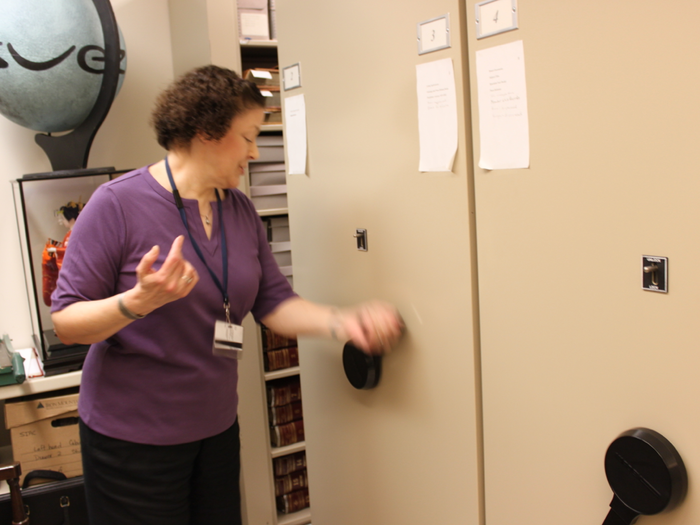
The archives date all the way back to the founding document, the Buttonwood Agreement from 1792. It's located the NYSE heritage gallery on the 7th floor of the stock exchange building.
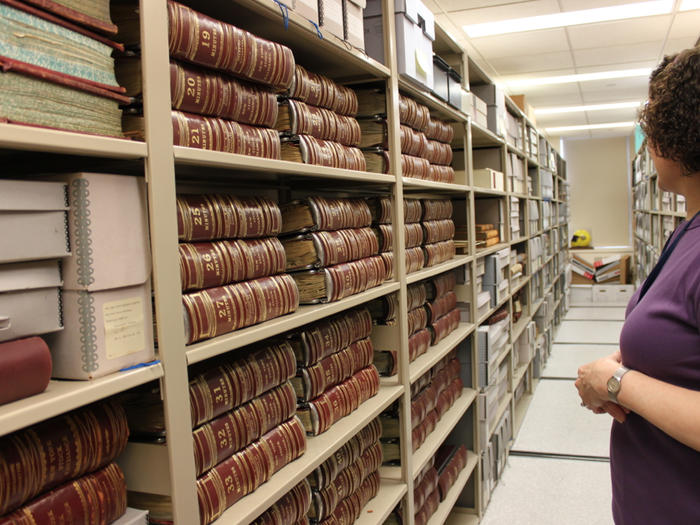
After the Buttonwood Agreement, trading was pretty much informal. There wasn't a formal trading body until 1817 when the New York Stock and Exchange Board, which eventually became the New York Stock Exchange, was formed. There are records in here beginning in 1817 up until today.
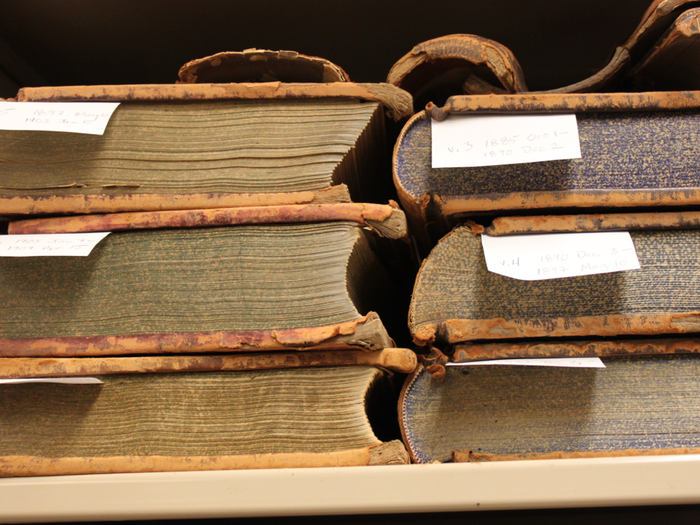
These are records from member committees that governed every aspect of business. You can literally smell the old books in the archives.

If you've wondered where the term 'seat on the Exchange' came from, they actually had seats. That's me sitting in a member's chair. This chair belonged to member 119 and it's from the 1865 building. (The current building was built in 1903).
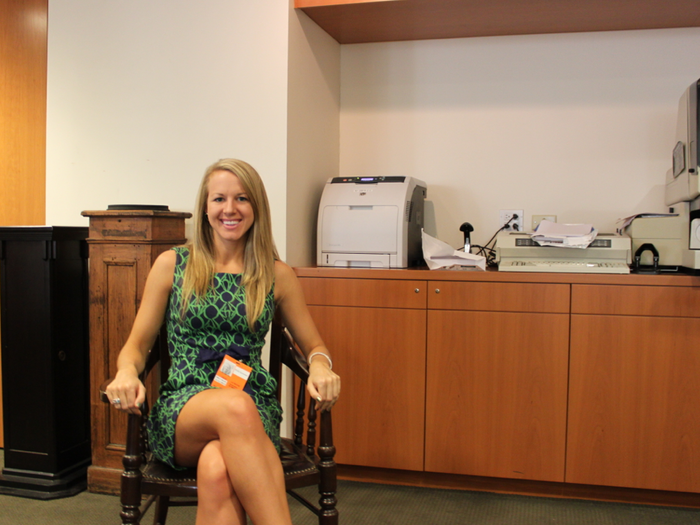
Back then, there wasn't continuous trading throughout the day. Members would sit in chairs and the president would call out the stocks and they would make their bids.
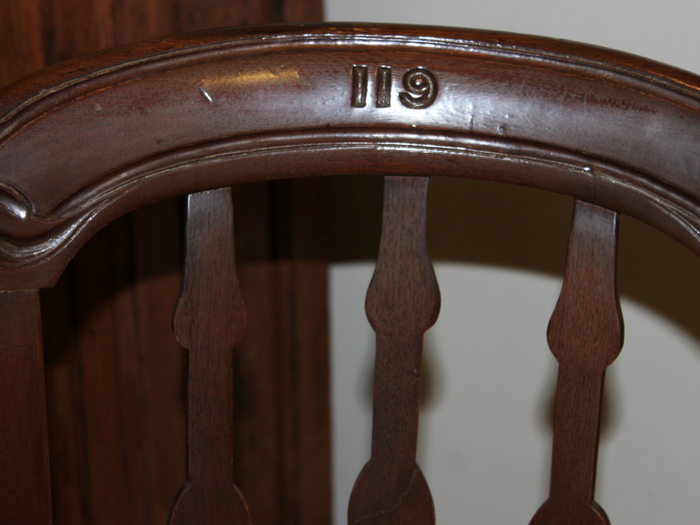
The 1903 New York Stock Exchange building was designed by architect George Post. He also designed a bunch of the original furniture, which the archives kept.
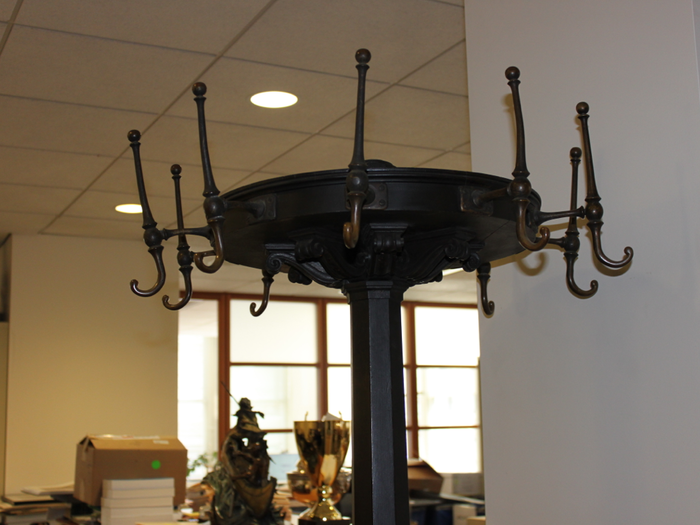
You can see some of George Post's furniture designs in the board room of the NYSE on the 6th floor.
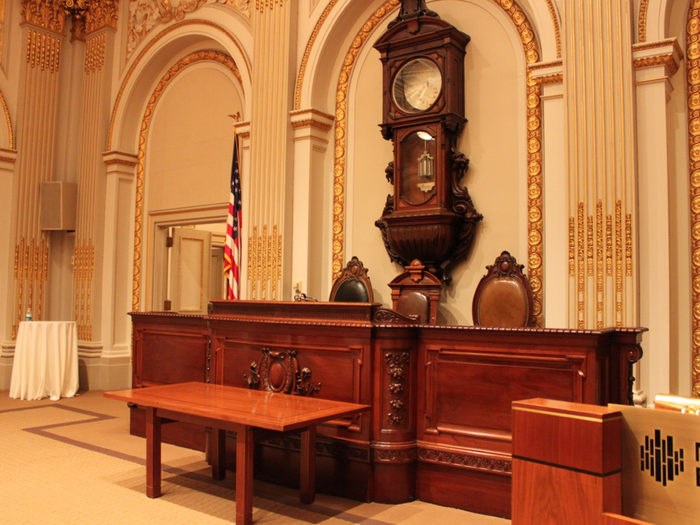
Also in the gorgeous board room is a Russian urn gifted to the exchange in 1903 by Czar Nicholas II. It arrived at the NYSE in 1904. Now back to the archive room...
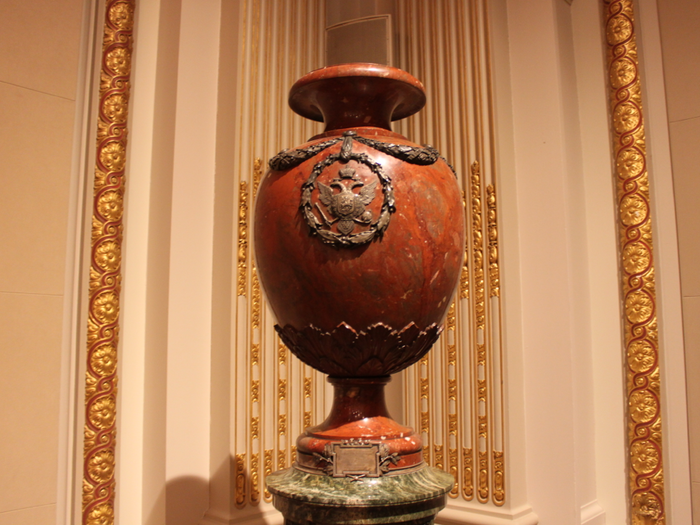
The NYSE also still has a collection of motion picture films. They have the original fim and the first one was done in 1928, which is a silent film. The films are educational they they show how the exchange works.

They play some of the old footage at the 2 Broad entrance of the NYSE. You've probably seen it used in films before.
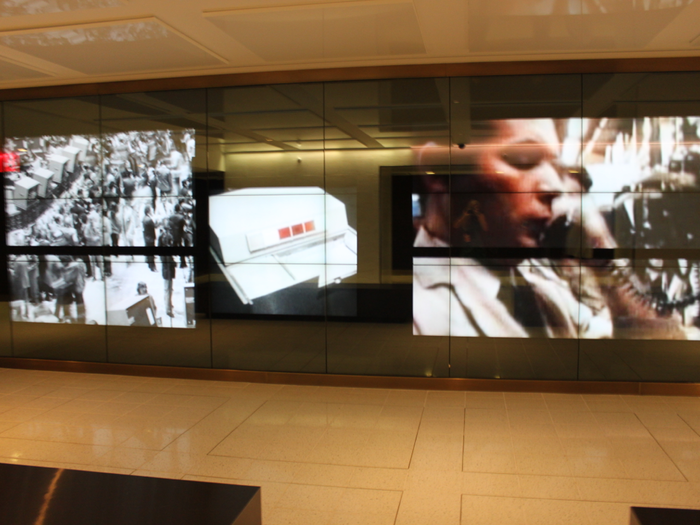
The only merger between 1817 and 2006 was in 1869 when the exchange merged with the Open Board of Stockbrokers. At that time, they drafted a new constitution.
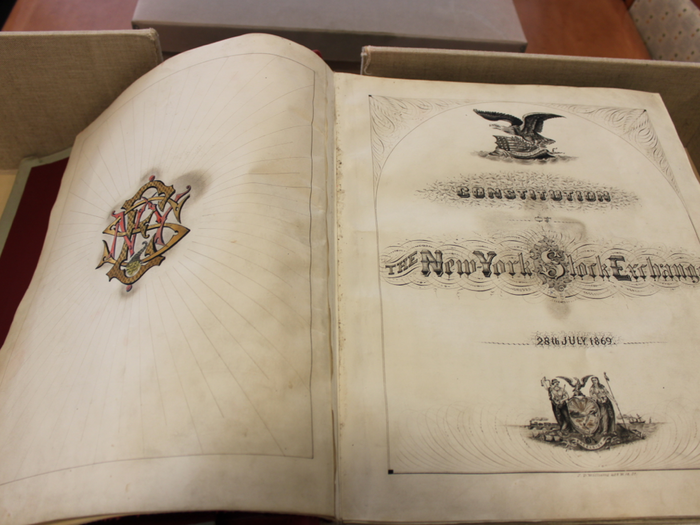
The constitution of the New York Stock Exchange is really beautiful. They filled up this big book completely with signatures and there are three more of them!
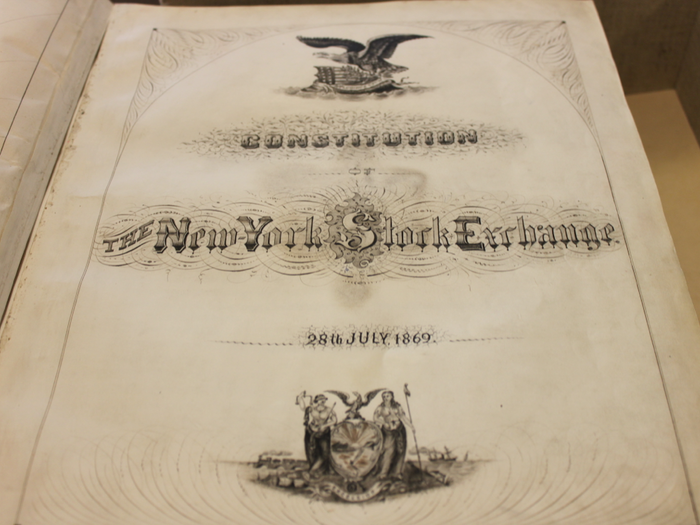
At the end of the constitution, everyone who was a member signed. They signed in the order of their admission date. These are the oldest signatures.
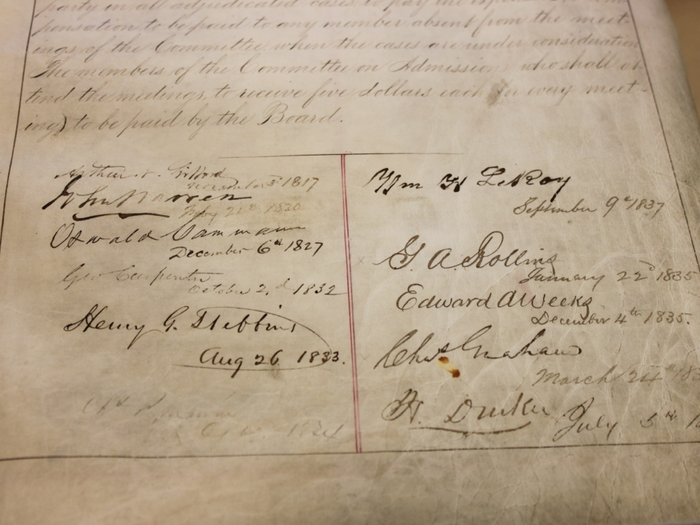
There are some famous names, too. There's John Pierpont Morgan, Jr., the son of J.P. Morgan.
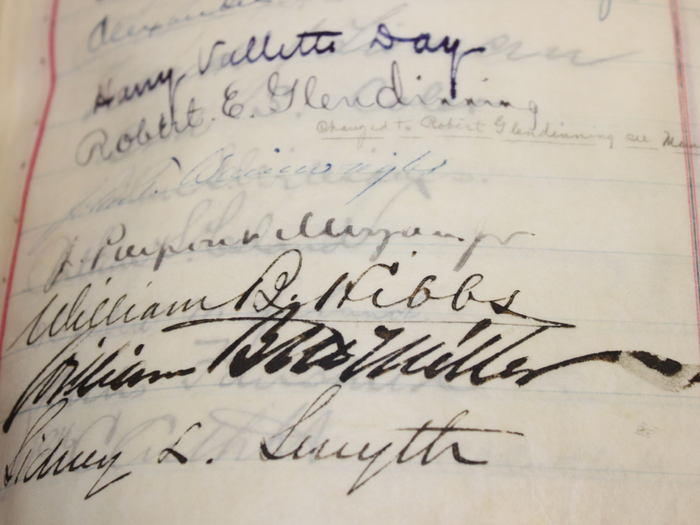
That's Bernard Baruch's signature. He advised Presidents Woodrow Wilson and Franklin Roosevelt on economic matters.
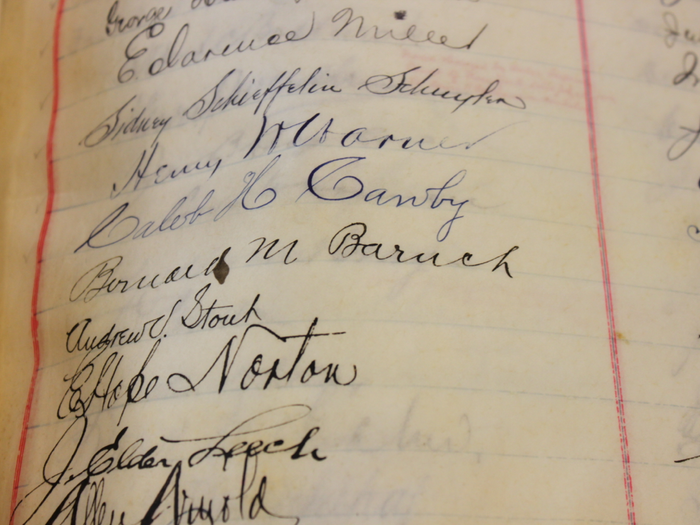
There's John D. Rockefeller's signature in the middle.
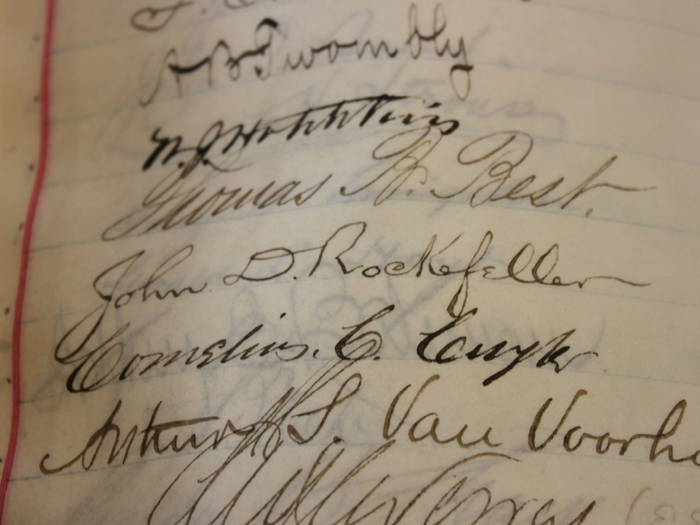
John Vernou "Black Jack" Bouvier III, the father of Jackie Kennedy, is on this page.
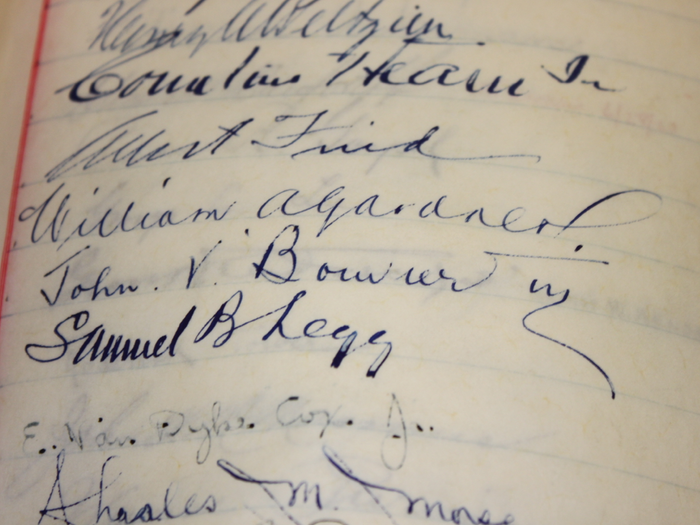
Muriel Siebert, the first woman to own a seat on the exchange, made it into the first volume in 1967. In 2006, when the NYSE went public they stopped filling the books with signatures, but last year they started up again and now the license holders do sign the book during a ceremony.
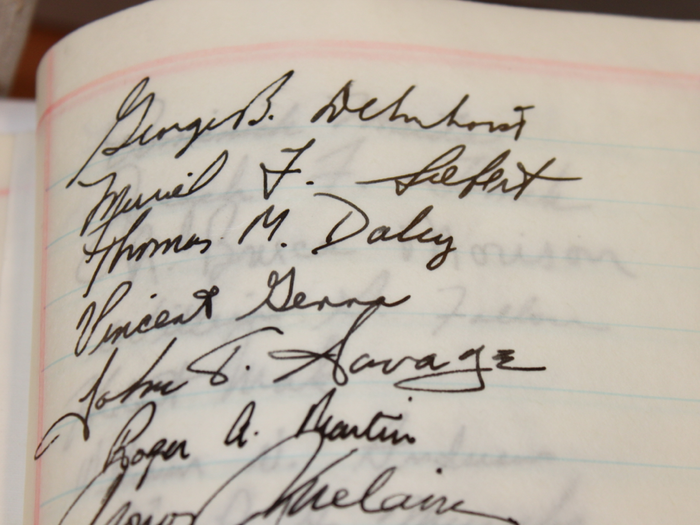
This is a photo album compiled by a member.
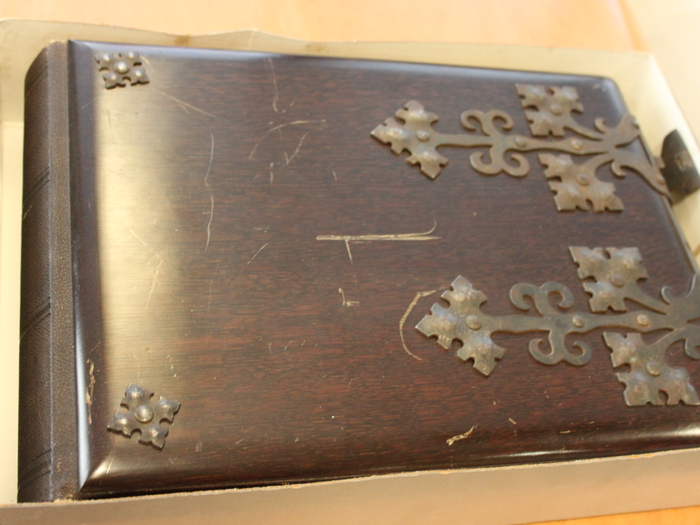
His name was John Jacquelin. He photographed all of his fellow members from the period when he was a member (1863-1910)

We love these old shots.
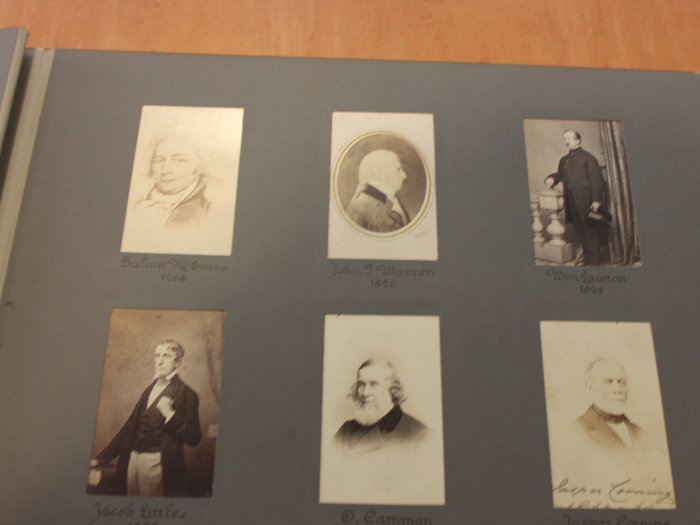
It looks like a yearbook.

What's cool is the member took it upon himself to put the photo album together.
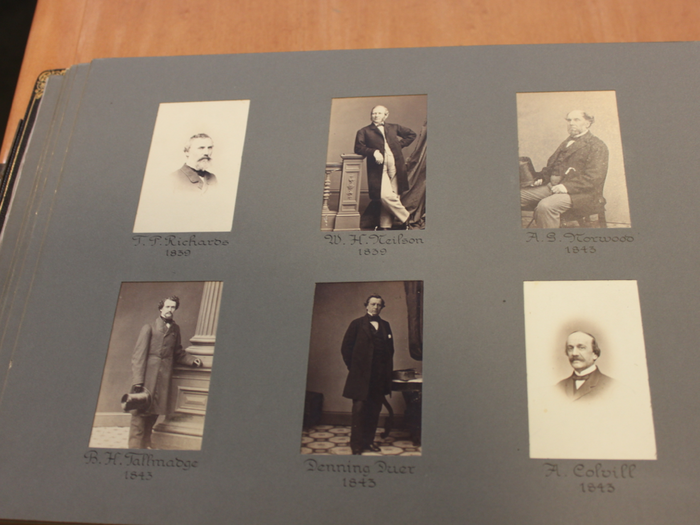
Yes, this is a first edition of 'Security Analysis', the famous book written by professors Benjamin Graham and David Dodd.
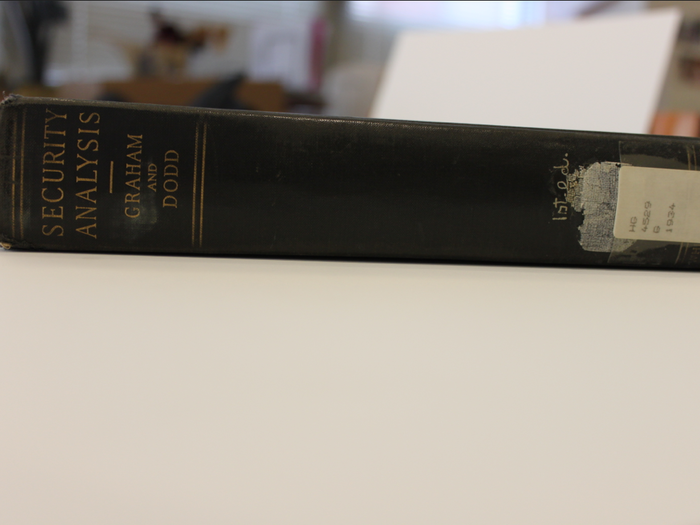
It's from 1934. It's very valuable.
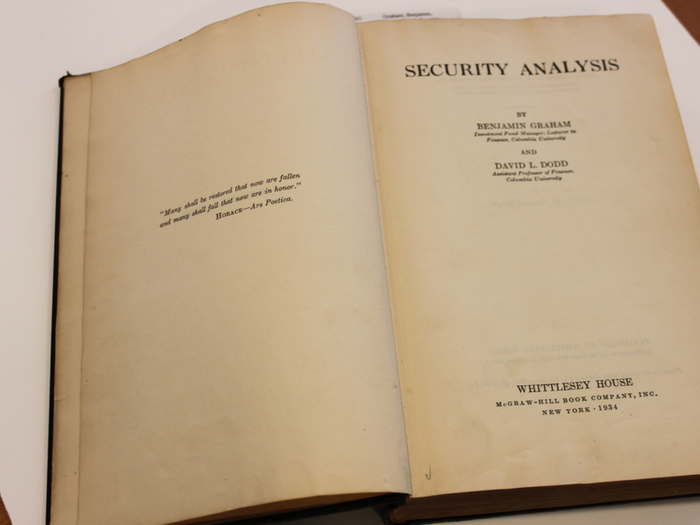
'The Art of Stock-Jobbing' from 1819.
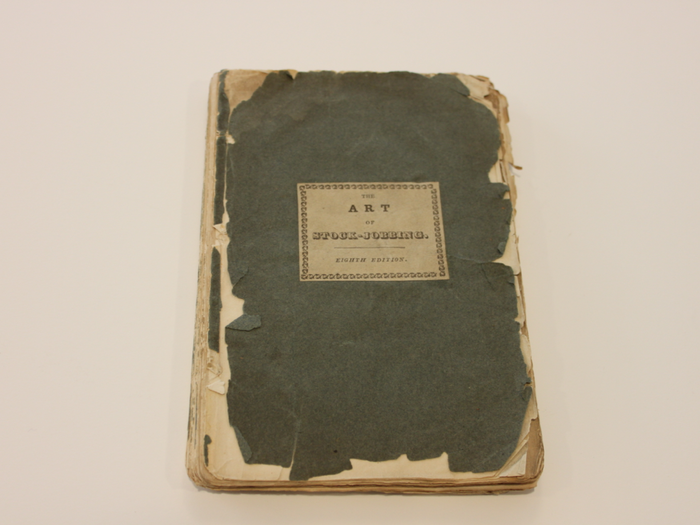
It's a guide to the London Stock Market.
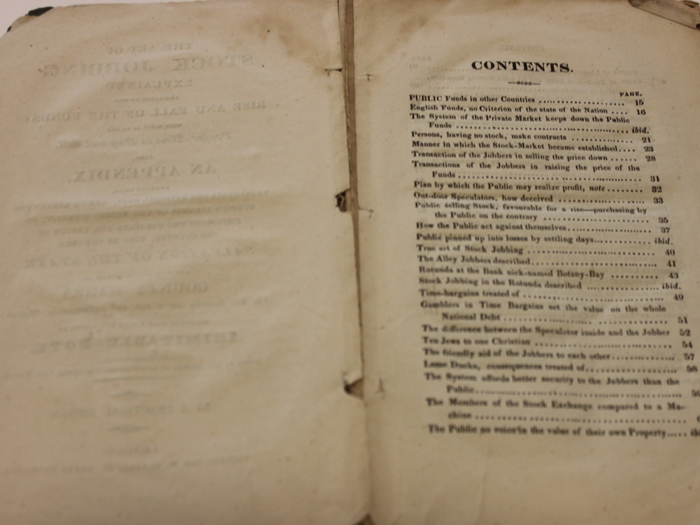
They also have cartoons from 1929. They were all published, but the exchange was able to purchase a lot of the original artwork.
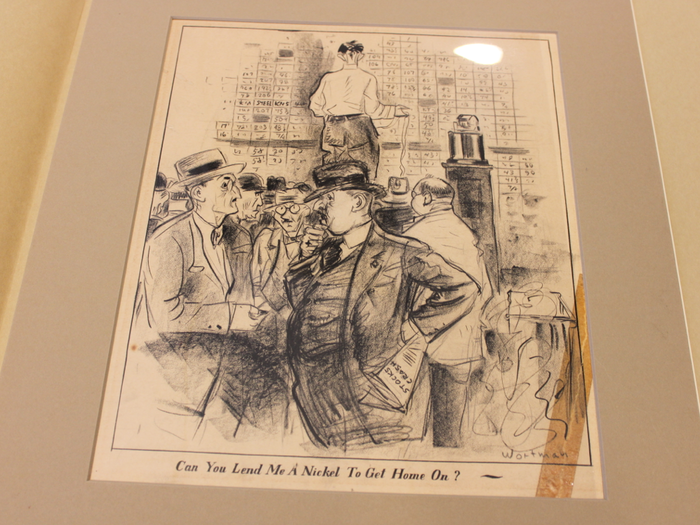
They have some really iconic ones.
This shows the craze of everyone worshiping the ticker. It's called 'The Goal.'

'Nothing like refueling to keep them up. Stocks supporting U.S. prosperity.'
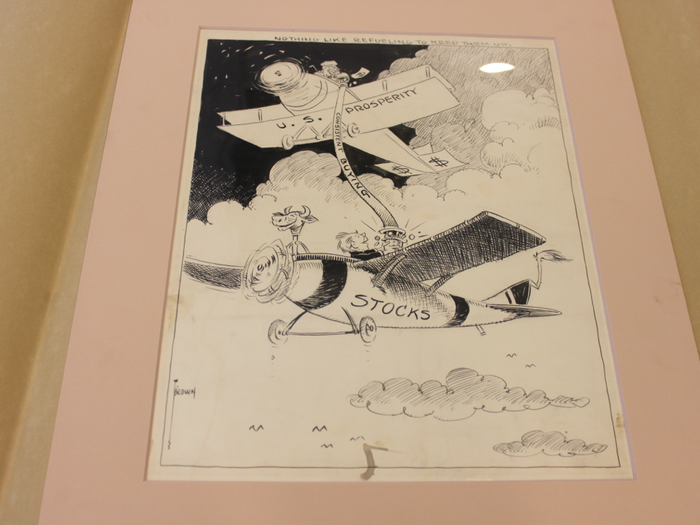
In the 1950s, there was a big campaign to involve the public as small stock purchasers. There were a number of these ad campaigns.
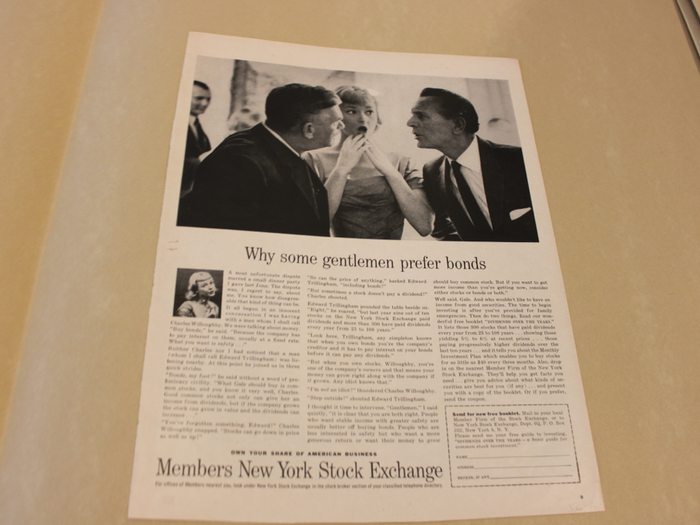
They just scream 1950s.

A lot of the artifacts are on display throughout the New York Stock Exchange. These old tickers are located in the lobby of the 2 Broad entrance.
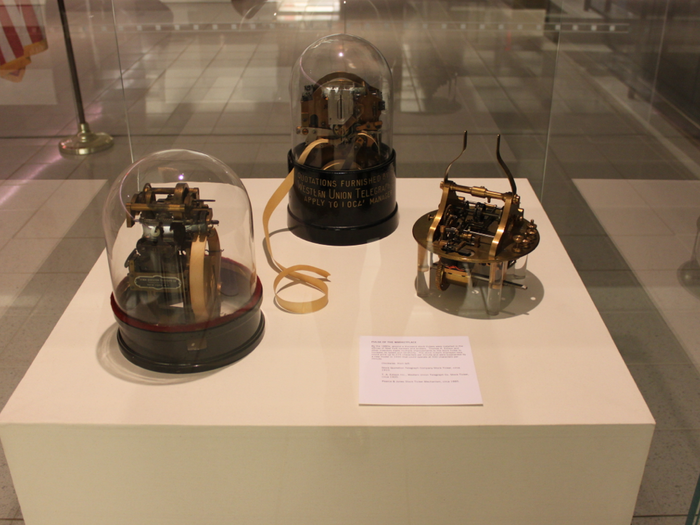
On the 7th floor of the exchange building, there's a heritage gallery.
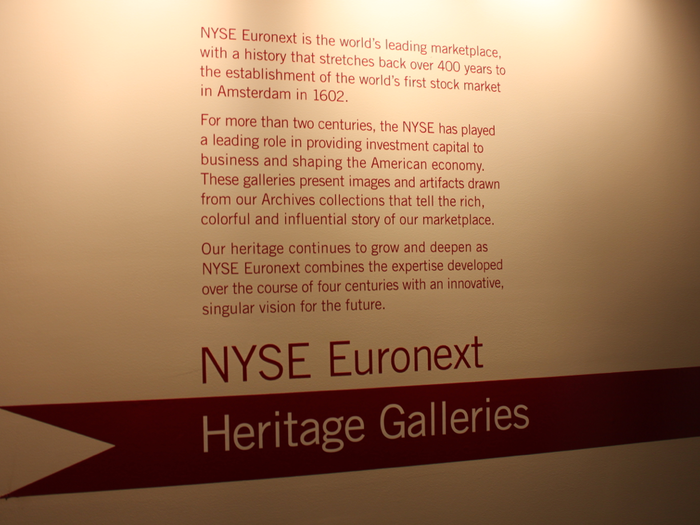
These old 1950s/60s photographs are neat.
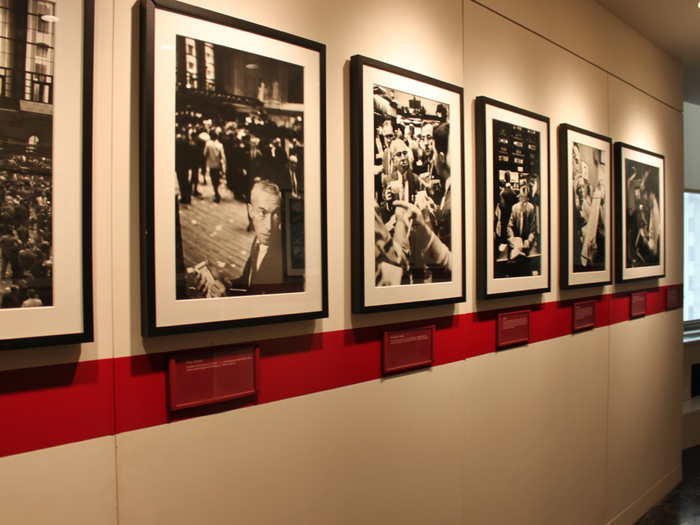
Legend Art Cashin said this guy is a broker trading U.S. Steel and he's watching the tape or news to figure something out.
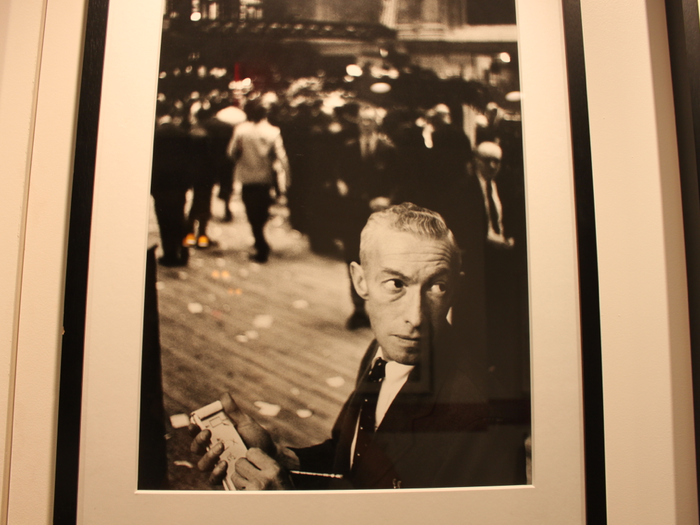
This is a pneumatic tubing station, widgets and order ships. This station dates back to 1922 and it was located on the 7th floor in the Stock Exchange Luncheon Club.
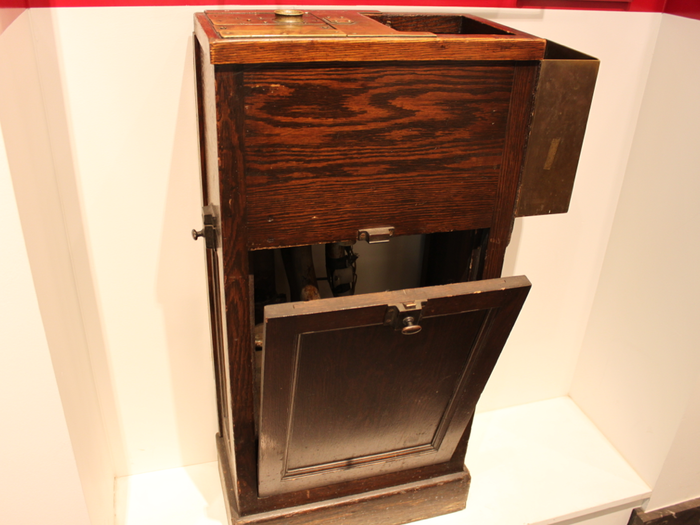
These capsules traveled through the pneumatic tubes carrying stock orders/reports to broker's booths.
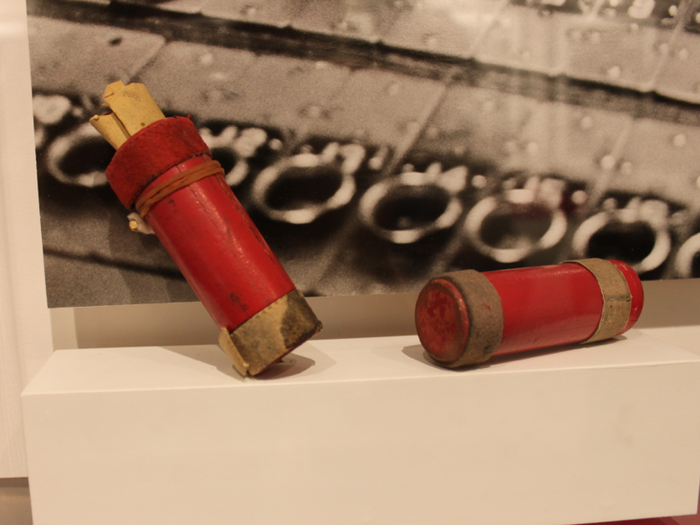
You can see the capsules were destined for the floor.
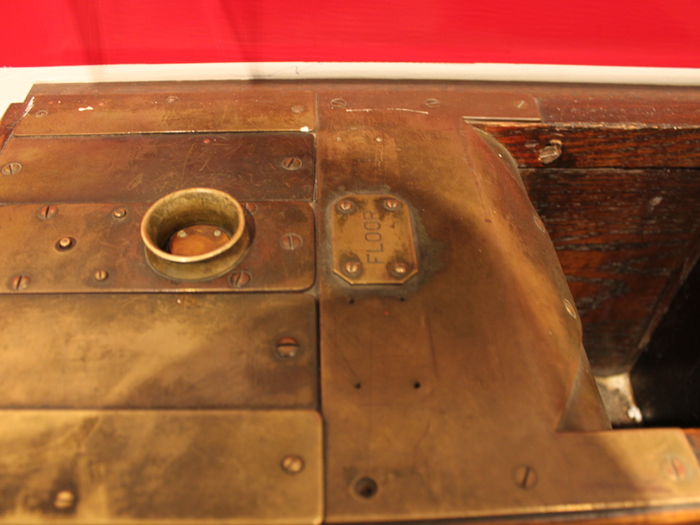
Here are the pipes.
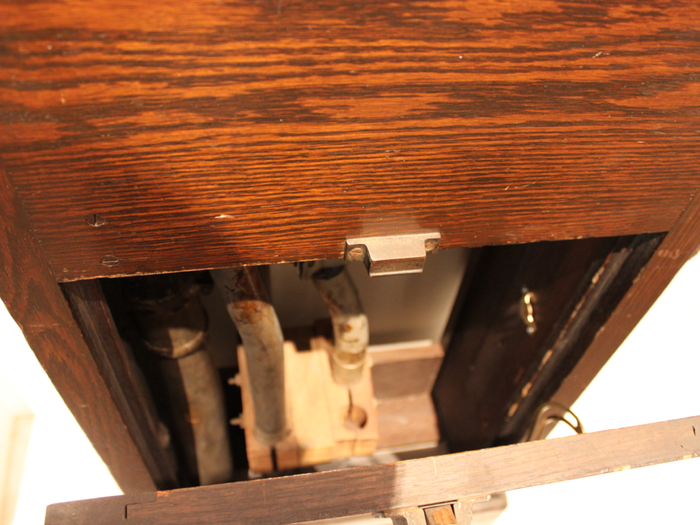
You can see how it works in this photograph.
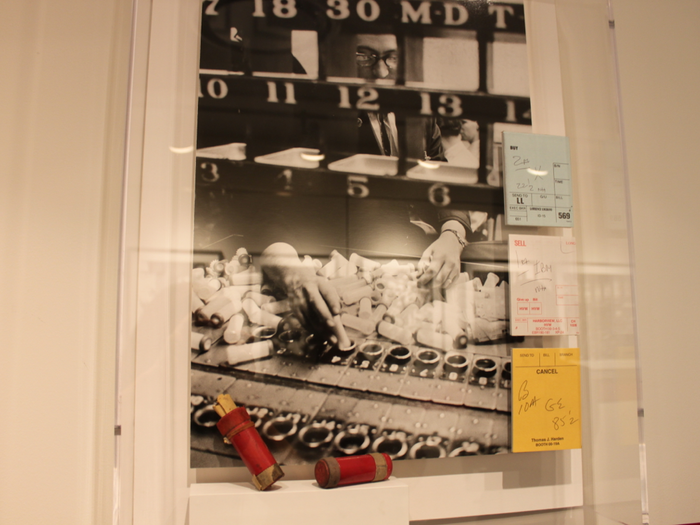
There are a lot of incredible artifacts in the gallery on the 7th floor.
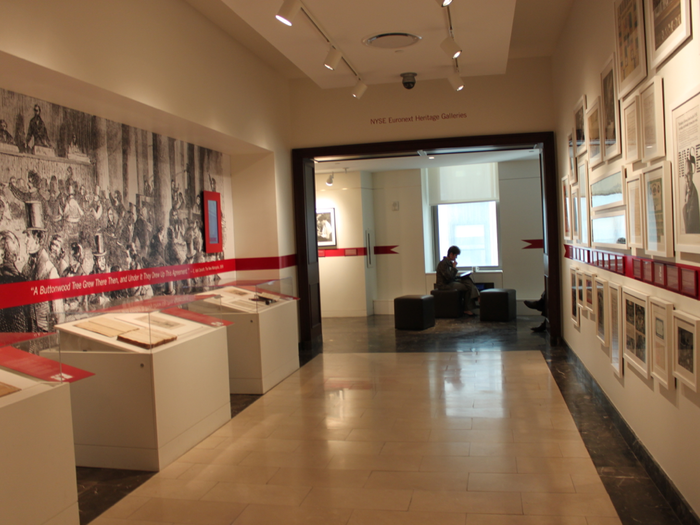
That's a letter from Thomas Edison to the stock exchange president inquiring about using his improved stock ticker.
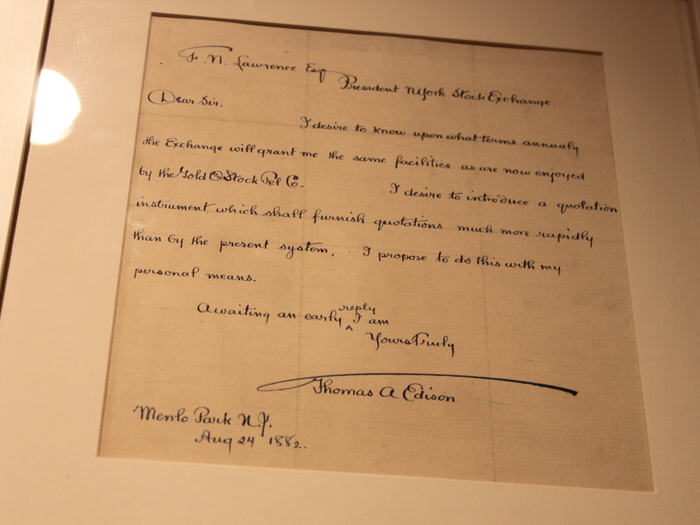
This photograph was taken on the night of the 1929 stock market crash.
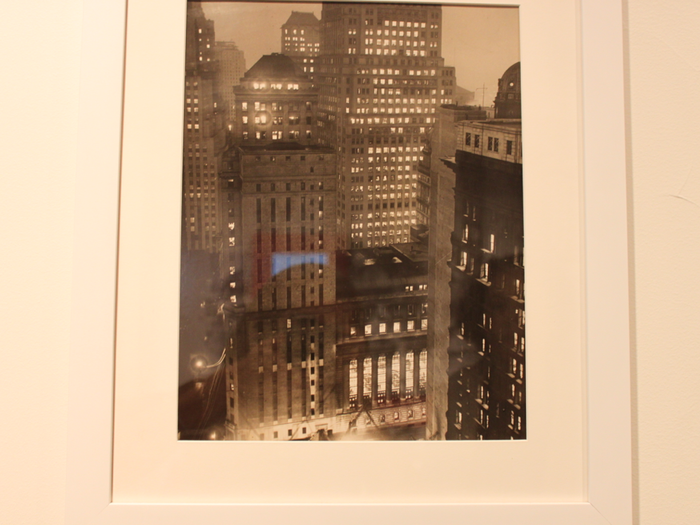
This is the press release announcing that Muriel Siebert is the first woman to own a seat on the exchange.
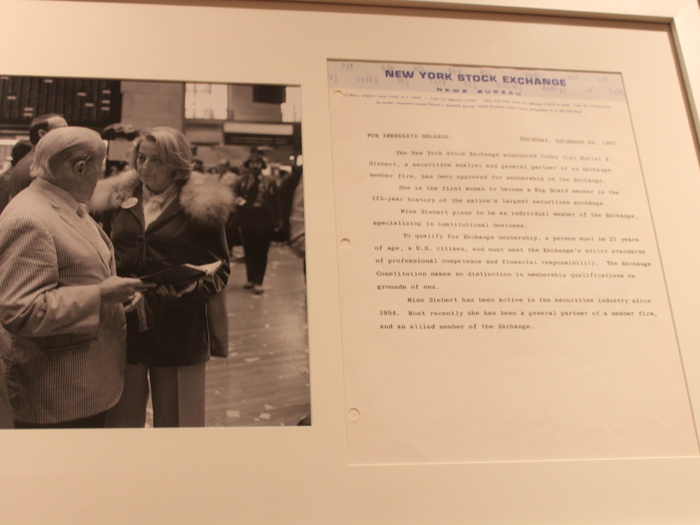
President Ronald Reagan was the first to visit the floor while in office.
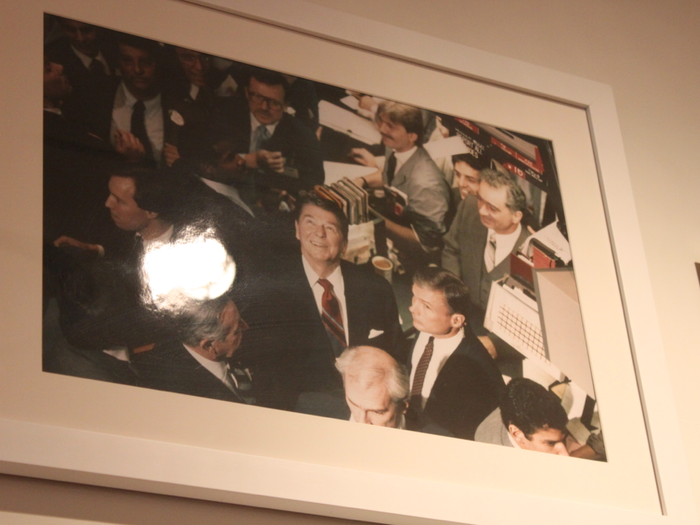
This is the Buttonwood Agreement from 1792. Twenty-four prominent brokers and merchants signed the document agreeing to buy and sell securities on a commission basis. The NYSE traces its origins to this document.
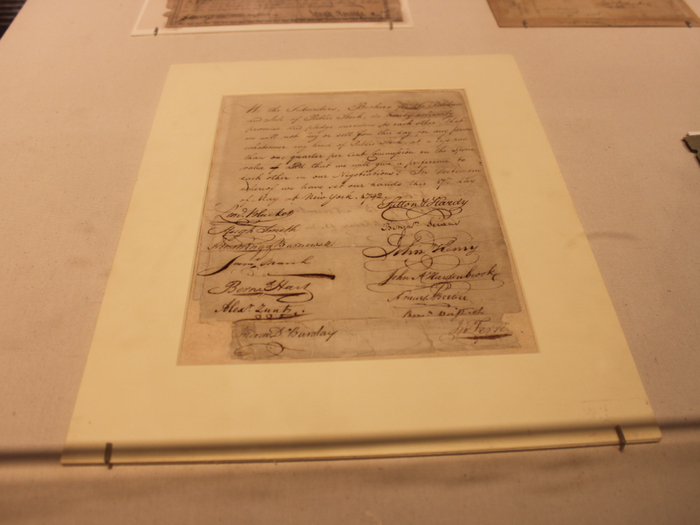
This painting of the Buttonwood Agreement signing is in the member's restaurant on the 7th floor. It was painted in 1949.

Now let's explore the rest of the NYSE...
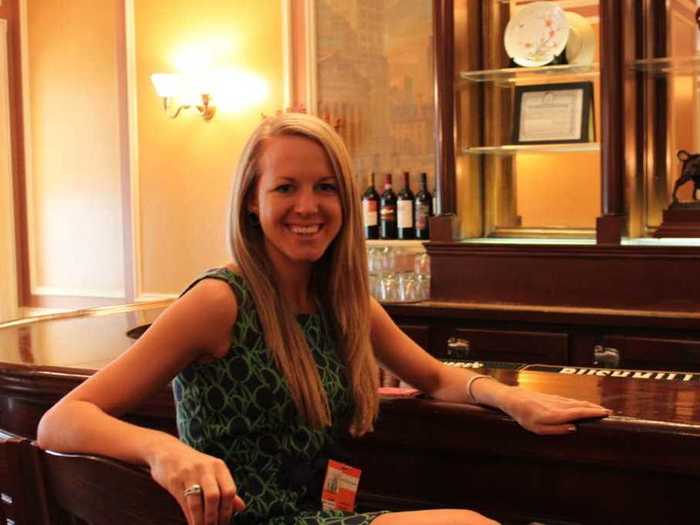
Popular Right Now
Popular Keywords
Advertisement